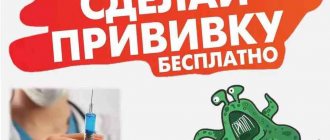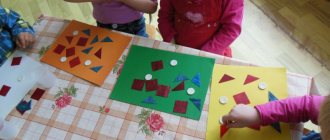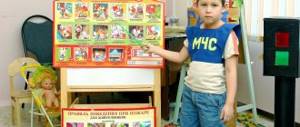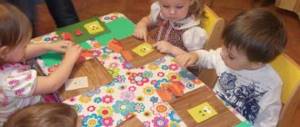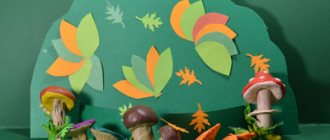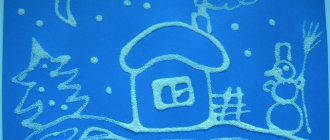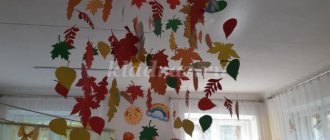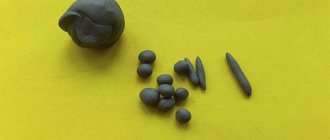We continue to talk about how to develop fine motor skills in a child with the help of games. Today you will learn why sculpting is more difficult and useful than drawing on paper. The child can sculpt figures from dough or plasticine
The more often a child engages in modeling, the more varied the material from which he sculpts, the more actively his general and visual abilities develop. The child sets serious tasks for himself, he develops constructive thinking, because when depicting a person in a drawing, it is enough to only draw two legs for him, but in modeling the task is more difficult - the person needs to stand on these legs. Great intelligence is required, and the brain, like muscles, develops when it is exercised.
Why is the development of fine motor skills so important for children? In the last century, physician and teacher Maria Montessori noticed a connection between the development of fine hand movements and children's speech. She suggested that fine motor skills influence a child's speech development.
The fact is that in the human brain the centers responsible for speech and finger movements are located very close. By stimulating fine motor skills and thereby activating the corresponding parts of the brain, we also activate neighboring areas responsible for speech.
Modeling can safely be considered one of the types of fine art that brings undoubted benefits in the development of a child.
Summary of the modeling lesson “Vitamins in the basket”
Yulia Vladimirovna Shmyrova
Summary of the lesson on modeling “Vitamins in the basket”
Lesson notes.
Modeling “ Vitamins in the basket ”
Goal: To teach children to work in a team, to sculpt fruits and vegetables as presented, using familiar sculpting ; to develop fine motor skills. To acquaint children with the concept of “ vitamins” , to form in them an idea of the need for vitamins in the human body, of healthy foods that contain vitamins ; to instill in children the need to eat properly, to cultivate a sense of empathy, and a desire to help.
Demonstration material: pictures of fruits and vegetables, images of vitamins in jars (tablets, a picture of food
Handouts: basket for vitamin products , plasticine, stacks, napkins, board for work.
For a surprise moment: pieces of chopped vegetables and fruits.
GCD “Vitamins from the basket” lesson plan on applique, modeling (senior group) on the topic
Topic: “Vitamins from the basket”
Goal: to strengthen modeling skills.
· To develop children's interest in working with plasticine on a horizontal plane - plasticineography.
· Continue to teach children to convey in their work the shape and structure of the characteristic parts of the fruits they know.
· Learn to use additional objects in work to convey the characteristic features of objects.
· To develop the skills of careful handling of plasticine.
Modeling methods
To move on to a specific type of composition creation, the child must be taught in stages.
First, they study with him a separate technique for making parts (sausages, balls, etc.). Then they show what other manipulations (pinching, pulling, cutting) can be performed with the material. The knowledge gained during the exercises is consolidated and the child is offered one of three ways to work with plasticine:
1. Sculptural. The craft is made from a whole piece, without adding elements. Children learn to distribute plasticine proportionally using these techniques
:
- stretching;
- topping;
- smoothing;
- rolling out.
2. Constructive. The product is assembled from different parts. First, prepare the largest part, and then attach the small ones to it. The method teaches children to distinguish small objects from large ones.
3. Combined. Includes the two methods above. The body is made from a single piece. Other parts are made separately and attached to the finished figure.
Modeling methods are divided into types based on the plot.
Subject - the production of a separate character or object.- Subject - creating a group of objects interconnected (depicting scenes from fairy tales, poems, stories).
- Decorative is an art form for creating compositions from folk art.
To make crafts easier, there are special devices. Stacks
– these are also
tools
for modeling. With their help, small parts are made that cannot be aesthetically created with fingers.
Stacks
There are
metal
, plastic, silicone, wood. The choice of devices depends on the future product.
Don't miss: What is a lapbook?
Preview:
Branch of the Municipal Budgetary Preschool Educational Institution
"Kindergarten No. 43" - "Kindergarten No. 36"
Summary of direct educational activities
on artistic and aesthetic development (modeling)
Goal: to strengthen modeling skills.
- To develop children's interest in working with plasticine on a horizontal plane - plasticineography.
- Continue to teach children to convey in their work the shape and structure of the characteristic parts of the fruits they know.
- Learn to use additional objects in your work to convey the characteristic features of objects.
- Develop skills in careful handling of plasticine.
Educator: Children, there is a letter included in the parcel, now we will find out who sent it to us. I read: “Hello my little friends!”
The monkey Chita is writing to you from the distant island of Chunga - Chango. One day, a swallow flew to us and told the inhabitants of the island that from early spring to late autumn she lived under the roof of a kindergarten. She watched the children with interest: how they played, how they walked, sang songs and practiced. She talked about how kind and smart, friendly and obedient you are. I decided that such good children deserve a gift. I am sending you fruits that grow on our island. Before you see them, try to guess the riddles about them that I came up with myself.”
We’ll eat everything one slice at a time……(Orange)
Educator: Here it is, so beautiful, round, fragrant, bright orange, like the summer sun. Now listen to the riddle about the other fruit that is in the package:
And if you clean it - sweet - sweet.
Educator: There is not just one banana here, there is a whole bunch of them. How about we make a composition from these fruits?
Listen to the riddle about the last fruit.
And if you take a bite, it’s sweet. (Apple)
Educator: Look what a beautiful, fragrant apple. Guys, what types of apples do you taste like? (sour, sweet) And by color? (red, yellow, green)
A tall vase stands on the table.
Rays play in blue crystal.
We will put a fragrant banana in a vase
A gift from distant tropical countries.
Add apple and orange
And after lunch we will eat fruit!
Educator: How many of you know the names of the works of artists that depict dishes, fruits, flowers...? (Still life)
Educator: Guys, I invite you to imagine how much fun you would have if you were monkeys. Let's play the musical game "We are the Merry Monkeys"
Educator: Guys, if you and I eat fruit, we won’t have anything left as a memory from Mickey. What should we do? And if you don't eat them, they will spoil. What do we do? Let us do this: we will depict the fruits, and we will get a beautiful picture - a still life.
I show the children the package that the postman brought to kindergarten.
Dough modeling
Modeling dough is a mixture of natural products: salt, flour and water. The recipe is simple and does not require large material costs. Well-kneaded dough is plastic and pleasant to the touch, easily deformed. But in the open air it hardens and becomes brittle. Store in the refrigerator in a plastic bag for no more than 4-5 days.
dough recipe : 1 cup fine salt + 1 cup flour + a little water. (To increase elasticity, you can add a tablespoon of starch, and for strength, a spoonful of PVA glue.)
Coloring
In the first option, natural dyes or gouache are added during kneading. Don't use Easter egg dye.
Another option is to decorate the finished and dried product.
Each color received is stored in a separate bag or container.
Drying
Can be dried in an oven at low temperature or in air. The time depends on the volume of the product and the drying method
Assembly
Often the composition consists of many parts, after complete drying they are glued together.
Testoplasty is suitable even for babies who put everything in their mouth; in this case, you cannot add glue and gouache.
It is important to remember that children should not be left alone with even the safest materials, not to mention sharp objects.
Plasticine is crushed and purified clay powder with the addition of wax, fat, petroleum jelly, and ozokerite. It can take any shape and is pleasant to the touch, so children love to roll it in their hands. To increase softness, it is recommended to warm it in your palms.
Basic sculpting methods
Before performing complex elements and designs of the fine art of modeling, it is necessary to learn how to create the simplest figures and master basic skills.
Rolling up
Using circular movements of your palms, roll into a ball of any size. Try turning an ordinary ball into a funny bun or a funny snowman.
Rolling out
By rolling the ball in your palms in different ways, in just a few movements you can turn it into an egg, a cylinder or a snake.
Flattening
If you squeeze the ball tightly between your palms, it will turn into a flat cake, and if you press it to the table, it will turn into a thin pancake. These figures can then be folded and twisted.
Topping
Use your fingers to grab a little material without separating it from the whole piece, then give it the intended shape.
Pulling back
This method is similar to pinching, only more material is captured and a new element is formed, for example, bunny ears.
Smoothing
When connecting two different parts, the transition area is smoothly smoothed, while removing excess raw materials.
Cutting
Any formed shape can be cut into pieces. For kids, it is best to purchase a plastic knife that will not hurt.
Compound
Most compositions consist of several small parts, so it is advisable to learn how to press them without disturbing the original shape.
Progress of the lesson:
The teacher draws the children's attention. That someone is knocking on the door. He goes out and brings a bunny.
- Look, guys, who I met: This is a bunny, say hello to him. — Why are you sad, little bunny?
-Are you really sick, bunny?
The bunny greets the guys and says:
-I was walking down the street without a hat and mittens and caught a cold. I also ate a little snow and now I think I’m sick. I don't want to get sick! If I get sick, then no one can play with me, with the sick person. Guys, tell me, please. What should I do to avoid getting sick?
Educator: Don’t be sad bunny, the kids will help you.
-Guys, do you want to help the bunny so that he doesn’t get sick? (Yes)
.
How can we help him? (He needs
vitamins ) .
The teacher turns to the bunny: - Sit down, little bunny, rest.
The children take their seats.
— Guys, what form of vitamin ? (Round)
-What color are they? (Both yellow and red)
-Look, what color is your plasticine? (Red, yellow)
-What do you need to do to make a ball? (Children tell and show)
.
-How can we get a small ball?
- Our fingers haven’t quite warmed up yet, let’s play with them.
The teacher reminds the children to sit at the table: the back is straight, the legs are together, the sleeves must be rolled up.
Remind you about sculpting : pinch off a small piece of plasticine, roll it with your fingers on the board, or in the palm of your hand.
Draw the children's attention to the silhouette of the jar : we will put the vitamins in the jar , starting from the bottom, placing them next to each other.
Children begin to roll up vitamins and put them in jars . While the work is being done, the teacher helps individually, showing the technique of rolling and pinching off a piece of plasticine.
After finishing work, look at the jars of vitamins .
Bunny: oh. So many vitamins ! Now I definitely won’t get sick. And I want to treat my friends with vitamins so that they don’t get sick either.
-What a great fellow you are. Thank you guys, you are true friends.
-I won’t eat snow or walk around without a hat anymore, and you guys won’t eat snow, okay? I'll go to the forest to treat my friends with vitamins . Bye!
Lesson summary “Growth Vitamins” “Growth Vitamins” Sashulka sat by the window and looked out onto the street. The cat Masha was basking under the warm rays of the sun. Sashulka took a closer look and decided to go out.
Lesson summary “Vitamins and their significance in human life” “Vitamins and their significance in human life” Topic: Vitamins and their significance in human life. Goal: to introduce children to the concept of “vitamins”.
Summary of the integrated lesson “I love vitamins - I want to be healthy” Purpose: Educational: - explain to children that daily consumption of foods provides the body with a sufficient amount of vitamins.
Notes on health conservation in the first junior group “Vitamins in a jar” Goal: developing ideas about the basics of health conservation in children of primary preschool age. Objectives: Give an idea of the methods.
Summary of a lesson on cognitive development “Healthy vitamins” Topic: “Healthy vitamins.” Integration of educational areas: “Cognitive development”, “Speech development”, “Social and communicative.
Summary of the lesson in the junior group “Fruits-vitamins” Purpose: - to introduce children to the concept of vitamins - to consolidate children’s knowledge about fruits and their benefits - to develop children’s interest in modeling. Tasks:.
Lesson summary for the preparatory group “Vitamins and healthy foods. Vitamins and a healthy body" MBDOU "Sebezh kindergarten "Solnyshko"" Lesson notes in the 2nd preparatory group "Firefly" Vitamins and healthy foods.
Lesson notes for the project “Vitamins and a healthy body” Type of project: medium-term. Participants: teachers, children, parents. Relevance of the project: The most pressing problem today.
Summary of the lesson “Vitamins and health” in the preparatory group Vitamins and health (preparatory group) Nomination “Preschool education” (Cognition) Tatyana Vladimirovna Ivanova, head, MBDOU.
Summary of the conversation “Vitamins grow on a branch, vitamins grow in the garden bed” Summary of the conversation “Vitamins grow on the branch, vitamins grow in the garden bed...” Purpose: to tell children about the benefits of vitamins and their importance for health.
source
Progress of the lesson.
Educator: - Guys, do you want to play with me?
Educator: - Sit on the chairs.
Educator: - Let's invite Anfisa to play with us .
The teacher brings in a cat toy
- Look, guys, Anfisa is kind of sad . Did something happen to her?
- Do you want to know? Let's ask her.
- Anfisa, what happened to you? You are ill?
Anfisa - I was very thirsty and drank cold milk. Now my throat hurts.
Educator: We need to feel sorry for Anfisa and help her.
- Guys, let's help Anfisa . Who wants to help?
- Go, Sasha, tie a scarf around his neck to warm his neck.
Educator: - I will give Anfisa medicine so that she gets better.
— Anfisa , you can’t drink cold milk and cold water
— Guys, what should you do to be healthy and strong ?
Children: eat soup, porridge, do exercises.
Educator: - Correct. You need to eat right, eat vitamins found in vegetables and fruits, wash your face every day, wash your hands before eating, wash your whole body and do exercises.
- Let's show Anfisa how to do exercises.
Physical Education Minute Girls and Boys
(hands on waist, rhythmic closing of eyes)
Educator: - Look, and Anfisa began to get better . Let's treat her with vitamins recovers faster . We make them out of plasticine and put them in a bottle. Just be careful, Afisa, don’t eat everything at once, but only one at a time.
Educator: - Guys, how many vitamins can you eat ?
Educator: - Do you know how to sculpt vitamins ?
Teacher: asks the children or shows himself that you need to pinch off a little plasticine, put it on your palm and roll it in a circular motion, then stick the resulting vitamin to the bottom of the bottle
vitamins did I get ?
Educator: - We remembered how to make vitamins . And now everyone will make one and give Anfisa their own bottle of vitamins .
Independent activity of children.
Educator: - What a great fellow you are, you helped Anfisa get better .
Anfisa : - Thank you, guys. I won't drink cold milk or water anymore.
“Snowflakes” Lesson notes. Artistic creativity (drawing) in the second junior group Goal: to learn to place snowflakes all over a sheet of paper; to consolidate the ability to draw correctly with a brush; to awaken interest in nature, to expand.
Artistic creativity (modeling) in the preparatory group “Snowman” Goal: creating a familiar image using the technique of plasticineography. Objectives: to consolidate the skills of rolling and flattening; to stimulate the interest of children. Summary of GCD “My Favorite Toy”. Artistic creativity of children Direct organized activities of children. Types of activities: - gaming, communication, perception of fiction.
Abstract of the GCD on the topic: “The Journey of the Monkey Anfisa in the City” for children of middle preschool age Prepared by: teacher S. O. Bogomolova, Bratsk Purpose. Improving understanding of basic traffic rules. Tasks.
Abstract of the GED for the Federal State Educational Standard in the middle group on the topic “Proper breathing is the path to health” Goal: to create a social situation for the child to develop a conscious attitude towards his health through proper breathing. Tasks: 1.
Abstract of educational activities in the secondary group for the educational activities “Cognition”, “Artistic Creativity”, on the topic: “Colorful boats” Objectives: 1. To develop children’s interest in design. 2. Learn to create planar models based on a sample (continue to learn to analyze.
Summary of a lesson on cognitive development “Everyone needs vitamins: they are important for health!” in the senior group “Everyone needs vitamins - they are important for health” Goal: developing children’s ideas about a healthy lifestyle. Objectives: Educational: - consolidate.
GCD for the NGO “Artistic Creativity” (modeling) based on the fairy tale “Fedorino’s Mountain” by K.I. Chukovsky Goal: to consolidate sculpting skills. Arouse children's interest in the images of fairy tales; continue to form an interested attitude towards the collective.
OOD “Artistic Creativity. Drawing" Summary of the lesson "Green Christmas tree", conducted in the second junior group. Program objectives: • clarify and enrich ideas about the upcoming event - the New Year holiday; • learn to look at objects (Christmas tree,...
"Grains for the Bird." Organized educational activities in an early age group. Artistic creativity (sculpting) Artistic creativity (sculpting) Lesson topic: “Grains for the bird.” Goal: To arouse interest in sculpting a treat for the bird. Small development.
source
Abstract of the GCD on fine arts modeling in the 2nd junior group “Vitamins are so important, everyone needs them for health.”
Abstract of GCD in Fine Arts (modeling) in the 2nd junior group.
Subject:
“Everyone needs vitamins, they are so important for health.”
Prepared by Moskaleva L.V. teacher of MBDOU d/s No. 21, Novocherkassk, 2020.
Target:
develop the ability to roll lumps of plasticine between the palms in a circular motion.
Tasks:
Developmental
: develop fine motor skills of the hands, perseverance, children’s speech as a means of communication.
Educational
: consolidate knowledge about vitamins and their health benefits.
Educational:
to develop interest in modeling, introduce safety rules when handling medications, and cultivate responsiveness.
Equipment:
boards, plasticine, napkins, Luntik toy.
Preliminary work
: reading the poem by K.I. Chukovsky “Doctor Aibolit”, “Luntik and his friends”.
Progress of the lesson:
There is a knock on the door. Luntik “comes” to visit the children.
Educator:
- Guys, look, Luntik has come to visit us. Why are you so sad?
Luntik:
-Hello guys! Kuzya and I were in such a hurry to visit you today! But Kuzya caught a cold and is now lying in bed. A doctor came to him and prescribed him vitamins. Guys, were you prescribed vitamins? What are vitamins for? (children's answers).
Educator:
- That's right, guys, vitamins help us cope with illnesses faster and not get sick.
Luntik:
-Oh, where can I get vitamins, because there are none in our forest!
Educator:
- Guys, how can you and I help Luntik? (children’s answers).
That's right, we are making vitamins from plasticine so that Kuzya gets better faster. And Luntik will watch how we sculpt.
Educator:
— Guys, remember what vitamins your doctor prescribed for you.
What shape are they? What colour? (children's answers).
- That's right, well done. (I show the vitamins and look at them).
-Before we get to work, let's play a game.
Finger game "Walk"
Let's go for a walk, fingers
Children clench the fingers of both hands into fists, the thumbs are lowered down and, as if jumping, move along the thigh to the knee.
And the second ones have to catch up.
Perform rhythmic movements with index fingers
Third fingers run.
moving the middle fingers at a fast pace
And the fourth on foot,
slow movements of the ring fingers along
The fifth finger jumped
rhythmic touching of the little fingers on the thighs;
And at the end of the road he fell.
clap both palms on the knees.
Educator:
Now guys, get to work.
The teacher reminds the children of modeling techniques (roll out plasticine between your palms in a circular motion).
Independent work.
Children make vitamins from plasticine.
Reflection. Consolidation.
Summary of the modeling lesson “Healthy Products” in the senior group
Ausheva Radimkhan
Summary of the modeling lesson “Healthy Products” in the senior group
Lesson summary: modeling.
Topic: “Vegetables and fruits are healthy foods ”
Strengthen knowledge about vegetables and fruits and their health benefits.
Strengthen the skills of sculpting vegetables of different shapes (spherical, oval, cone-shaped, the ability to convey their characteristic features.
illustration “Window display of a grocery ”, natural vegetables and fruits of various configurations - several pieces of each type; handout: plasticine, boards, stacks, napkins.
